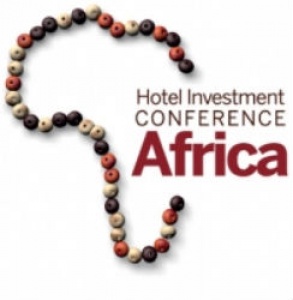Southern Africa: A diamond mine for hotel investors?

Africa’s future is bright. Africa is moving decisively out of recession, and looks set to renew its pre-recession average growth rate of six per cent (African Economic Outlook 2010 and Travel & Tourism Competitiveness Report 2011) due to a move towards market friendly economic framework conditions that have helped to nurture growth (InsightGroup 2011).
Africa’s tourism industry has profited through this period, and moreover is now perceived to be “on the path to recovery” (Jones Lang LaSalle Hotels’ hotel Investment Survey 2011).
The World Travel Organisation recently forecast that in-bound tourism to Africa will increase over 50 per cent from 2010 to 2020 while Africa’s combined consumer spending (currently $860 billion) is also set to continue its growth.
Economic data indicates a decade of sustained growth and development for the continent.
By 2020, Africa’s collective GDP will be $2.6 trillion and by 2040 it will have workforce of 1.1 billion (McKinsey Global Institute 2010).
In the decade to March 2010, the International Finance Corporation (IFC) saw a return of almost 22 per cent a year on its African private equity portfolio, higher than any other emerging market.
At the Hotel Investment Conference Africa (HICA) on September 26th and 27th in Casablanca, Morocco, the hotel community and those who finance its development will convene to discuss the African hotel investment opportunity.
High on the agenda is the role Southern Africa can play in energising hotel investment for the continent.
“Over the last ten years, six of the world’s ten fastest-growing economies were in sub-Saharan Africa and the IMF forecasts sub-Saharan Africa will grab seven of the top ten places over the next five years,” said Kurt Ritter president the Rezidor Hotel Group.
“Building on our unparalleled success in Europe and the Middle East we are taking our development plans in Africa to new heights with a focus on both business and leisure destinations.
“In the last 48 months we have added 33 hotels to our African portfolio growing from 8 hotels in 5 countries to 42 hotels in 16 countries.”
Ed Fuller, president of Marriott International (which has 4,000 hotels worldwide), also considers this the ideal time for expansion into Southern Africa.
Marriott are “very excited” about investing in one of the world’s fastest growing regional economies, which needs more hotels to service the WTO’s expected 50 per cent increase in in-bound tourism.
African Highlights
Zambia is widely considered one of Africa’s true success stories.
After years of political (0.4 per cent chance of government instability/coup, Travel & Tourism Competitiveness Report 2011) and economic stability (forecast annual growth rate of 7.1 per cent (BMI)) the country has continually confounded many expectations and has used its massive natural resources base to further its tourism aspirations. (It is the world’s 4th largest copper producer and holds six per cent of the world’s copper reserves).
Additionally, bordering eight countries - Democratic Republic of Congo, Malawi, Zimbabwe, Tanzania, Mozambique, Botswana, Namibia and Angola - Zambia is strategically placed to feed off existing infrastructure such as roads and railways.
In order to sell the Zambian tourism story the government has diversified away from its traditional natural resource based economy and has exploited the country’s bountiful wildlife.
Infrastructure does exist in the form of 38,763 kilometres of tarred road, as well as gravel and dirt roads.
Zambia is also serviced by two entry points by train and can be entered from seven of its bordering neighbours.
The country offers vast wildlife reserves as well as stunning natural beauties such as Victoria Falls.
The main concern for those visiting not only the country but the continent however is the lack of competitive hotel accommodation, according to InsightGlobal.
Though South Africa is currently experiencing a slump in tourism, this is to be expected in the year after hosting an international sporting event.
In 2010, South African tourism grew by 15.1 per cent (globally tourism grew by 6.7 per cent) mainly due to the FIFA World Cup which helped to generate and increased revenue from foreign visitors by 22.6 per cent.
Tourism from Europe grew 8.1 per cent, Asia and Australasia grew 34.6 per cent and America’s grew 37.4 per cent (2010 Annual Tourism Report).
However, South Africa recently filed preliminary paperwork with International Olympic Committee (IOC) for the potential to host the 2020 games (Reuters 29.07.2011).
If successful, these financial results ought to be replicated twice in a decade.
In financial terms, tourism generated more foreign exchange earnings then any other export, including gold (which grew at 12.7 per cent).
Total direct foreign spend (including capital expenditure) was up 13.9 per cent from 2009 while the average spend per foreign tourist per day (excluding capital expenditure) was R1080 ($156USD).
Total bed nights in South Africa for 2010 were 66.9 million, an increase of 11.1 million from 2009 (2010 Annual Tourism Report).
South Africa is globally ranked as the 66th most visited destination with a ranking of 55th for its cultural resources (World Heritage Sites) and 14th for its natural resources.
South Africa’s air transport infrastructure is ranked 43rd, railroads 47th and road quality 43rd which ultimately ranked the country as the 31st country most conducive to development (Travel & Tourism Competitiveness Report 2011).
All of which culminated in South Africa being voted the best investment destination in Africa (Africa Business Panel).
As indicated by Marriott and Rezidor’s significant investment plans for Southern Africa it is clear that its role in the next decade will be crucial to the success of Africa’s tourism market.
Investors at the inaugural Hotel Investment Conference Africa will be able to hear these issues and many more deliberated on by hoteliers and financiers alike.
Further information on HICA website.

